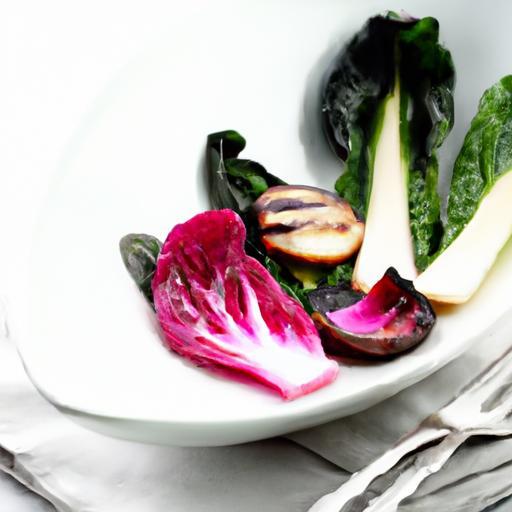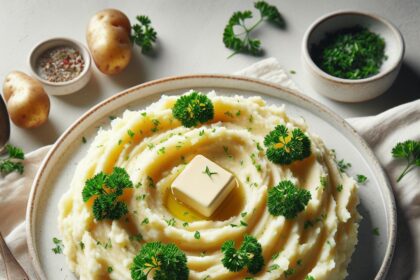In the world of vibrant vegetables, cabbage stands out as a humble hero-versatile, nutritious, and brimming with crunchy freshness. Yet, preserving that impeccable crispness and garden-fresh vitality can be a challenge once it leaves the patch. Enter the art of storing cabbage right: a careful balance of temperature, moisture, and timing that transforms your leafy globe into a long-lasting culinary treasure. In this guide, we’ll unravel the secrets to keeping cabbage delightfully crisp and fresh, ensuring every crunch in your salad or stir-fry tastes like it just came from the field. Prepare to elevate your veggie game with storage wisdom that turns simple cabbage into a pantry superstar.
Crisp & Fresh storage begins with selecting the right cabbage variety that promises extended shelf life and lasting crunch. Whether you favor the tight, dense heads of green cabbage or the vibrant textures of Savoy, knowing which type thrives in long-term storage will transform your culinary prep and reduce waste.
Prep and Cook Time
Preparation: 10 minutes • Cook Time: N/A (Storage-focused)
Yield
Serves multiple meals – one whole cabbage typically supports 4 to 6 servings depending on use
Difficulty Level
Easy – just simple prepping and storage techniques
Ingredients
- 1 whole fresh cabbage (green, red, or Savoy variety)
- Clean kitchen towels or paper towels
- Plastic wrap or perforated plastic bags
- Optional: a shallow container for crisper storage
Instructions
- Choose the ideal cabbage variety. For longevity, opt for dense-headed green cabbage or the crisper Napa type. Darker, heavier heads tend to last longer due to their tight leaf structure.
- Inspect and clean the cabbage gently. Remove any loose or bruised outer leaves while preserving the tightly wrapped core. Avoid washing before storage to prevent excess moisture buildup.
- Wrap the cabbage carefully. Use a dry kitchen towel or paper towel to encase the cabbage, absorbing any residual moisture.
- Place wrapped cabbage in a perforated plastic bag. This promotes airflow and helps maintain ideal humidity without trapping condensation.
- Store in the coolest part of your refrigerator. Ideally, keep cabbage between 32°F and 40°F (0°C to 4°C) inside the crisper drawer, where humidity is highest, around 90-95%.
- Check periodically. Replace towels if damp and remove any spoiled leaves to maintain freshness.
Chef’s Notes: Tips for Success
- Try storing halved cabbage cut-side down wrapped tightly in plastic wrap for up to a week while maintaining crispness.
- For longer storage, whole heads last best. Avoid pre-shredding; once cut, cabbage lasts only 1-2 days even with optimal care.
- Keep cabbages away from ethylene-producing fruits like apples and bananas to prevent premature spoilage.
- You can place a damp paper towel inside the perforated bag to maintain humidity but be vigilant about moisture buildup.
Serving Suggestions
When ready to use your perfectly stored cabbage, slice it thinly for fresh coleslaw, sauté with garlic and bacon for a savory side, or add it chunked into hearty soups. Garnish cooked dishes with a sprinkle of toasted sesame seeds or a dash of fresh lemon zest to brighten the flavor and highlight the crisp texture preserved through attentive storage.

Essential Storage Conditions at a Glance
| Factor | Optimal Range | Why It Matters |
|---|---|---|
| Temperature | 32°F – 40°F (0°C – 4°C) | Slows enzymatic breakdown and microbial growth |
| Humidity | 90% – 95% | Prevents wilting and leaf dehydration |
| Airflow | Moderate, via perforated bags | Reduces condensation and rot risk |
For more expert vegetable storage tips, explore our Mastering Vegetable Storage Techniques post. For scientific insights on the role of humidity in veggie preservation, visit the USDA Agricultural Research Service.
Q&A
Q&A: Crisp & Fresh – Mastering the Art of Storing Cabbage Right
Q1: Why does cabbage sometimes lose its crispness so quickly after purchase?
A1: Cabbage is a leafy vegetable with high water content, making it prone to wilting and sogginess if not stored properly. Exposure to air and moisture fluctuations can cause its leaves to lose turgidity, resulting in limpness and loss of that satisfying crunch.
Q2: What’s the secret to keeping cabbage fresh and crunchy for longer?
A2: The magic lies in controlling moisture and airflow. Wrap your cabbage tightly in plastic wrap or place it inside a perforated plastic bag to maintain humidity without trapping excess moisture. Store it in the crisper drawer of your fridge where cooler temperatures slow down deterioration.
Q3: Can you store a cut cabbage the same way as a whole one?
A3: Cut cabbage is more vulnerable since the exposed surfaces oxidize and dry out faster. After slicing, tightly wrap the cut side with plastic wrap or aluminum foil and refrigerate immediately. Using a container with a damp paper towel can help maintain moisture without letting it get soggy.
Q4: Is it better to wash cabbage before storing?
A4: It’s best to wash cabbage just before using it rather than before storage. Washing adds moisture, which can promote mold and spoilage during storage. Instead, keep your cabbage dry and clean; give it a good rinse right before cooking or eating.
Q5: How long can properly stored cabbage stay fresh in the fridge?
A5: When kept under ideal conditions-wrapped and refrigerated-a whole head of cabbage can stay crisp and fresh for up to 2 weeks. Cut cabbage generally lasts about 3 to 5 days before it begins to lose its crunch and flavor.
Q6: Any tips for reviving slightly wilted cabbage?
A6: Absolutely! Soak the wilted leaves in cold water for 30 minutes to an hour. This rehydrates the cells and can restore some of that crispness. Just make sure to dry the leaves well before storing again or cooking.
Q7: Are there any storage methods to avoid when trying to keep cabbage fresh?
A7: Avoid storing cabbage near ethylene-producing fruits like apples and bananas, as this gas speeds ripening and spoiling. Also, don’t leave cabbage at room temperature for extended periods; warmth accelerates spoilage.
Mastering cabbage storage turns this humble vegetable into a versatile and crunchy superstar in your kitchen – ready whenever inspiration strikes!
To Conclude
In the world of fresh produce, cabbage often takes a humble stance-but with the right storage know-how, it can transform from a simple staple to a vibrant, crisp delight that elevates every meal. By mastering the art of storing cabbage properly, you not only preserve its crunch and flavor but also unlock a world of culinary possibilities that last longer than you ever imagined. So next time you bring home that leafy green globe, treat it with care, and watch how freshness and flavor flourish together, turning every bite into a celebration of nature’s perfect harvest. Crisp, fresh, and ready-your cabbage deserves nothing less.








